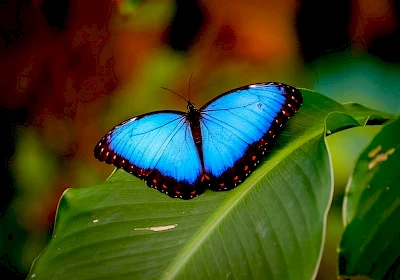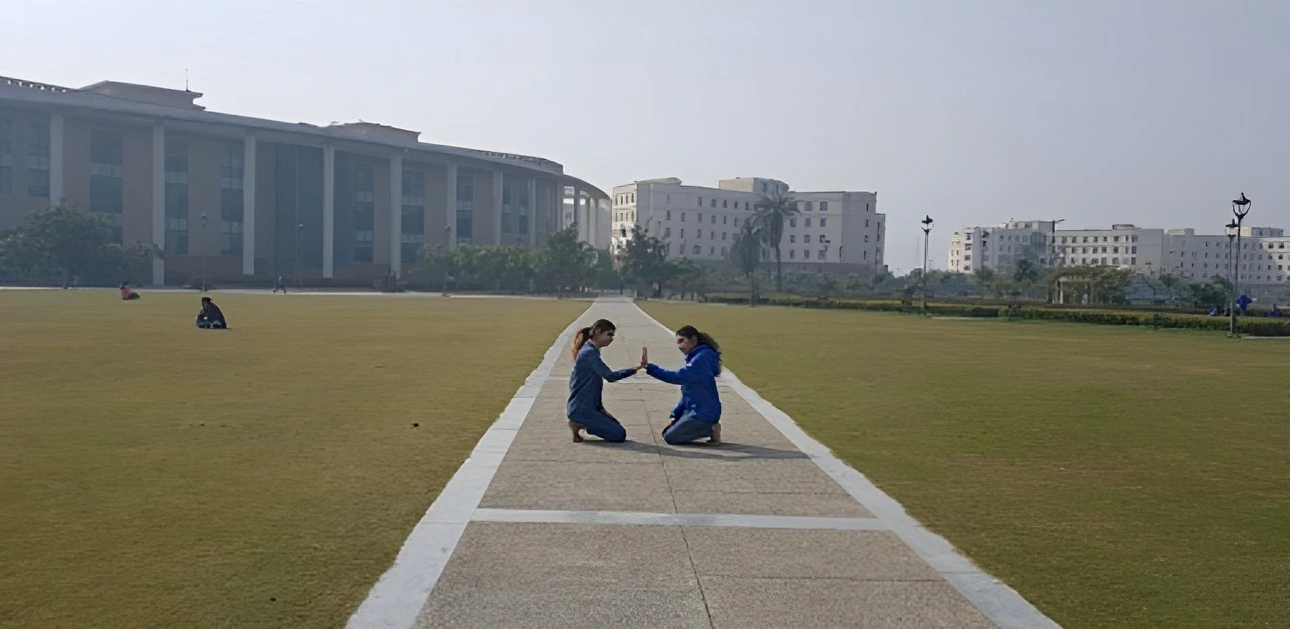Dye Hard: Decoding Nature's Colour Structure

Editorial / August 09, 2024
What if you were told that the blue colour on a butterfly wing isn't blue at all? Can you guess the similarity between artworks by Oakland-based painter Kate Nichols, a blue morpho butterfly, and a security hologram on currency notes?
These questions may seem disjointed, but they are all connected through the specialized study of structural colours.
Structural colours are those derived from micro- or nano-scale structures that reflect specific wavelengths of light. This colour doesn't fade like pigments. Inspired by the greatest scientist – nature – researchers have found ways to create these structures to help humans reach new boundaries.
Such fascinating photonic structures can be generated from an artificially constructed nanostructure. These structures can change colour in response to external stimuli, such as pH levels, temperature, electrical or magnetic fields, etc.
Does it mean we can create the grey Aston Martin V12 Vanquish used by James Bond (Pierce Brosnan) in 'Die Another Day' that can turn invisible? Or the Invisibility Cloak Harry Potter uses?
Dr. Ashish Kumar Thokchom, Assistant Professor at the School of Engineering, is advancing this science in his Soft Matter Lab. His research focuses on sustainable applications of structural colours.
"It isn't far that scientists develop an invisibility cloak or an invisible car for that matter. But currently, research in this field is focused on innovations that allow sustainable development of society — such as energy-efficient building films that reflect harmful sun rays, keeping buildings cool in summer and warm in winter. This could lead to significant savings on power bills. We can now develop a film that can reflect the sun's harmful rays to keep the building cool in summer and warm during winter, which can help save millions in power bills. Another ground-breaking application of this research is in beauty products. This can eliminate human exposure to harmful chemicals and even the use of animals on which these chemical-based cosmetics are tested," says Dr. Thokchom, an alumnus of IIT-Guwahati.
The state-of-the-art Soft Matter Lab at Shiv Nadar Institution of Eminence is home to equipment like the Optical Microscope for µ-PIV, a PIV – PTV experimental setup, and a 2D micropatterning platform using a micro-syringe pump.
Using the facilities, Dr. Thokchom is also looking to develop flexible and tunable photonic crystal devices for various applications such as anti-counterfeit, gas sensors, and camouflage. Working with Appurva Tiwari, a Ph.D student in the Chemical Engineering Department, Dr. Thokchom has published several papers on the subject.
Dr. Thokchom's work aligns closely with the UN Sustainable Development Goal 7, which ensures access to affordable, reliable, sustainable, and modern energy. A significant aspect of this goal is promoting energy savings from efficient, green buildings –both commercial and residential– which is a substantial benefit of this research.
More Blogs

The Hawthornden Literary Retreat bestowed on Dr Sambudha Sen to complete the manuscript of a novel
Professor Sambudha Sen, Head of the Department of English at Shiv Nadar Institution of Eminence, Delhi-NCR, was awarded a residency at the...

The Power of the Moving Body
Movement is an innate bodily action that humans have been exhibiting for the longest time. Long before language was invented, the body was the...

How Does A Multi-Disciplinary Approach To Education Enhance Learning And Prepare Students For A Multi-Faceted World?
In today’s world, where businesses are changing almost every day, it is the responsibility of educational institutes to provide holistic...